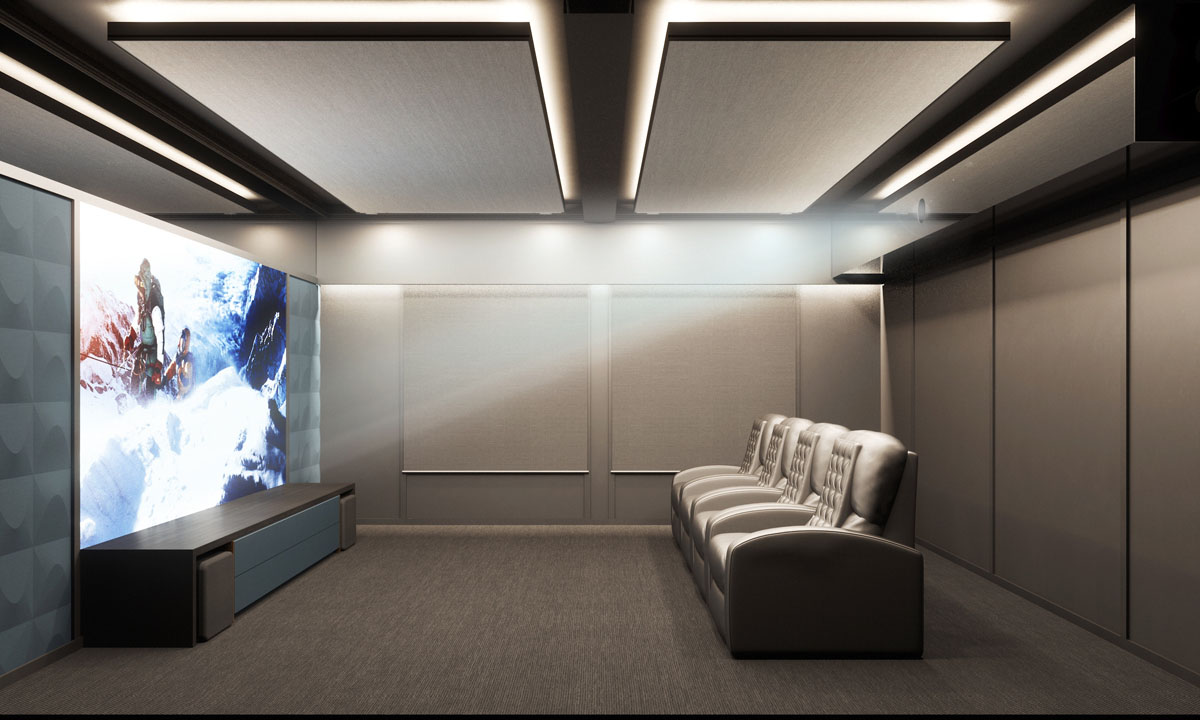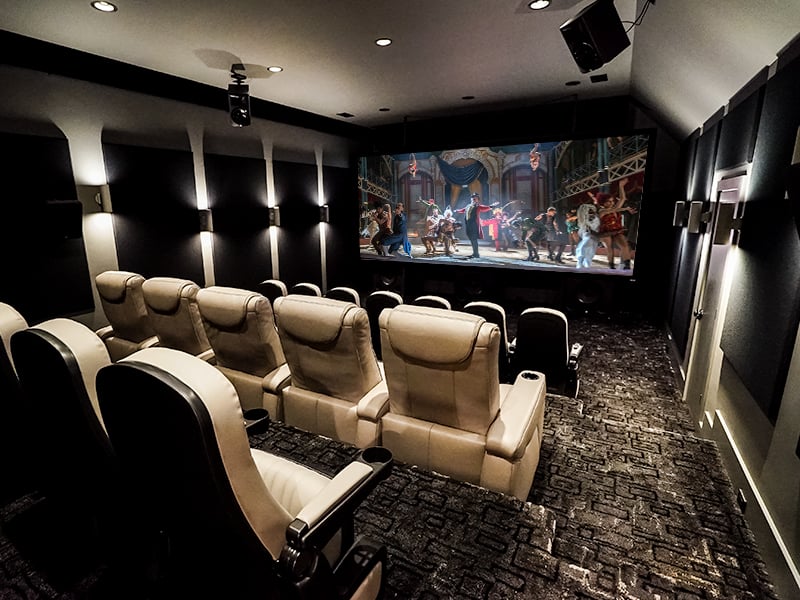Innovative Home Theater Tampa Concepts for the Contemporary Home
Innovative Home Theater Tampa Concepts for the Contemporary Home
Blog Article
Home Theater 101: Every Little Thing You Required to Know for a Motion Picture Experience in your home
Developing a home cinema that matches the cinematic experience of a commercial theater involves cautious consideration of several elements, consisting of screen choice, stereo, and room format. Each aspect plays a crucial duty in achieving the preferred atmosphere and performance. Whether you are pondering the perfect screen size or the ins and outs of border audio, comprehending these basics is essential. As we explore these essential parts, it ends up being apparent that the choices made can considerably affect your overall viewing experience, leaving one to contemplate exactly how these choices will form your individual cinema.
Picking the Right Screen
When establishing up a home cinema, picking the ideal screen can make or break the watching experience - tampa home theater. The display functions as the centerpiece of your setup, influencing photo top quality, watching angles, and general visual. Key factors to take into consideration consist of display resolution, size, and kind
First, identify the suitable screen dimension based on your area dimensions and seating range. Next, pick between different screen kinds, such as fixed-frame, mechanized, or retractable screens, each offering distinct benefits.
Resolution is an additional crucial element. For an absolutely immersive experience, think about a display made for 4K or perhaps 8K material, ensuring sharpness and clearness. Additionally, consider the screen's gain, which impacts illumination and comparison; a greater gain can enhance brightness in well-lit rooms, while a reduced gain may be better for darker settings.
Selecting Sound Equipment
Audio devices is a critical component of any type of home movie theater system, dramatically boosting the total viewing experience. The selection of audio gear can determine the depth, quality, and immersion of noise, essential for creating a cinematic atmosphere.
When choosing audio devices, take into consideration a border audio system, which commonly includes a receiver, several speakers, and a subwoofer. A 5.1 or 7.1 channel system is advised, where the initial number stands for the speakers and the second the subwoofer, supplying an immersive soundscape. The receiver is the heart of the system, managing audio and video clip signals, and should support modern layouts like Dolby Atmos for an improved spatial experience.
Quality audio speakers are essential; look for versions that use a balanced audio account with great bass response. Floor-standing audio speakers can create richer sound, while shelf options conserve room. Furthermore, think about cordless alternatives for simplicity of setup, although wired systems typically supply exceptional performance.

Optimal Seating Arrangements
Producing a suitable home cinema experience hinges dramatically on optimum seating setups. The plan of seats plays an essential duty in both convenience and checking out high quality, straight impacting the total motion picture experience.
First, think about the display size and viewing range. A typical guideline is to position seats at a distance about 1.5 to 2.5 times the angled size of the screen. This makes sure an immersive experience without straining the eyes.
Following, altitude is vital. The back rows need to be greater than the front to stay clear of obstructions if your seats is in a tiered style. For flat seats, make sure that the front row is not too near the screen, and that every person has a clear view.
Moreover, take into consideration the arrangement in terms of social characteristics. Group seating can enhance the common experience, while individual seats might be preferred for personal watching.

Lastly, prioritize convenience with ergonomic seating that sustains extensive viewing durations. Incorporating reclining chairs or cushioned seats can dramatically enhance the experience, making the home movie theater a favored location for both home entertainment and leisure.
Lighting and Setting
Efficient lights and setting are necessary components of a well-designed home movie theater, as they considerably affect the seeing experience. The ideal lights can improve the motion picture feel, while poor options can interfere with it. For optimal outcomes, take into consideration a split lighting approach that includes ambient, task, and accent illumination.
Ambient lighting offers general illumination, making certain that the space is not completely dark, which can strain the eyes. Dimmer buttons are very recommended, allowing for additional info modifications based upon the content being seen. Task illumination, such as wall sconces or flooring lights, supplies useful illumination for activities like reading explanation or navigating the area without disrupting the total ambience.
Accent lights can be made use of to highlight building features or develop centerpieces, including deepness and rate of interest to the room. LED strip lights behind displays or along shelves can supply a refined radiance that boosts the aesthetic experience without overwhelming the customer.

Wiring and Installation Tips
A well-planned electrical wiring setup is crucial for achieving optimum efficiency in your house cinema system. Appropriate electrical wiring not only ensures high-grade sound and video clip signals however likewise enhances the overall visual of your area. Begin by mapping out your format, identifying where each component will certainly be put, including your screen, audio speakers, and receiver.
When choosing cable televisions, focus on top notch, properly assessed wiring to additional info reduce signal loss. HDMI cables need to be made use of for video connections, while audio speaker wire need to match the requirements of your speakers and amplifier. Choose in-wall ranked wires to follow security requirements and preserve a tidy look.

Verdict
In summary, producing an exceptional home movie theater experience needs mindful factor to consider of numerous aspects, including screen selection, audio equipment, seating arrangements, lights, and wiring. By prioritizing these elements, a cinematic environment can be efficiently duplicated, permitting for immersive viewing experiences that rival traditional theater setups.
Producing a home movie theater that equals the motion picture experience of a commercial theater involves careful consideration of numerous parts, including display option, sound systems, and space layout.When setting up a home cinema, picking the appropriate display can make or break the seeing experience. Next, choose in between numerous display types, such as fixed-frame, motorized, or retractable displays, each offering unique advantages. For an absolutely immersive experience, think about a display created for 4K or also 8K material, making sure sharpness and quality.In summary, developing a remarkable home theater experience calls for mindful factor to consider of different elements, consisting of screen selection, audio equipment, seating setups, illumination, and wiring.
Report this page